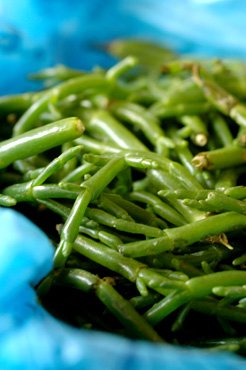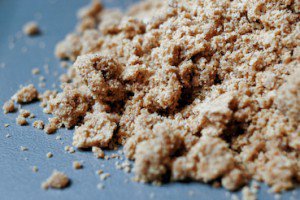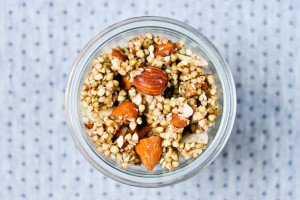
Not quite a vegetable but not quite a seaweed, salicornia must have gone through a tough identity crisis as a teenager. And that’s not even taking into account the multiple names it has to answer to — sea bean, sea asparagus, glasswort, or marsh samphire in English, perce-pierre, salicot, cornichon de mer, or criste-marine in French.
Whatever the moniker, salicornia is a wild, succulent plant that grows along the seashore and in salt marshes. It comes in bushes of crisp and juicy twigs that are harvested in late spring to early summer (i.e. now) and can be eaten raw, cooked, or pickled.
Pickled salicornia is easy to come by in Brittany, and in fact this is where I first encountered it as a child: my family vacationed on the coast for a week every spring, and we would buy the occasional jar of softly pickled salicornia to add to the salads my mother made in the awkward kitchen of whatever house we rented.
I was already fond of the sour/salty combo at the time so it was a treat for me, but I suspect that part of my appreciation came from the fact that the word salicorne is so similar to the word licorne (unicorn), which is very cool by any standard, whether you’re an eight-year-old girl or a fan of Blade Runner or both.
The above-pictured salicornia, however, is not pickled. Its bright green color, starkly offset by the fish market blue of the plastic bag, indicates that it is raw: Maxence and I bought it fresh at the poissonnerie last weekend, happy to stumble upon this relative rarity a mere two days after having it at the British ambassador’s house.
Oh, did I not mention we had dinner at the British ambassador’s house? It must have slipped my mind. Well, we did, and the occasion was the all-British banquet that the BBC organized for the final show of their Great British Menu series, which aired this past Friday. It was a memorable evening — I wouldn’t mind having a garden like the ambassador’s — and one of the things we liked best about the menu was the salicornia that was paired with Richard Corrigan’s wild salmon, between Sat Bains’ ham, egg, and peas and Mark Hix’s stargazy pie.
The salicornia that we found was a bit more mature and thus thicker, so some of the twigs needed to have their woody end trimmed — much like your average asparagus stalk. Because it grows so close to the sea, salicornia is very salty, so I soaked it in fresh water for a little while, boiled it for three minutes in unsalted water (you could steam it, too, but it wouldn’t remove as much salt), then sautéed it for two minutes in olive oil.
The resulting jumble of dark green twigs, yielding but crisp, their flavor marine and slightly ferrous like spinach, was an assertive yet flattering side to whole pink trouts. I plan to buy more salicornia before the season ends, and I am contemplating using it in a quiche or an omelet, or, finely chopped, in a steak or salmon tartare.













